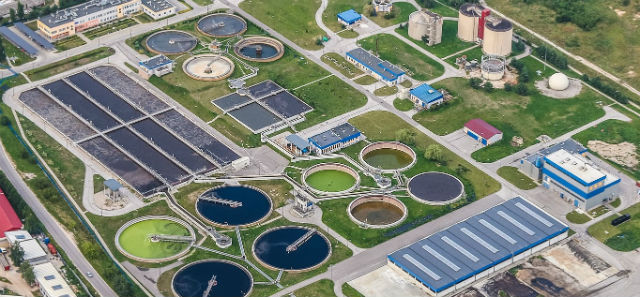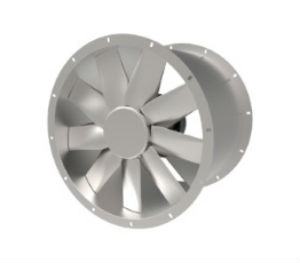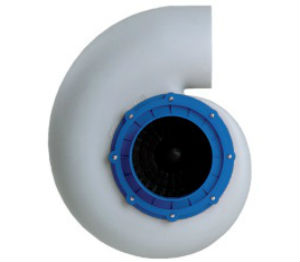
Wastewater treatment plants face a number of challenges in terms of ensuring safe and effective ventilation. The chemicals used during the wastewater treatment process pass through metering equipment in a dosing system. In the system, the solution is at its strongest and the chemicals and their gases are often corrosive and can be flammable. Such chemicals and gases include methane, ammonia, phosphorous, pesticides and carbon dioxide. Consequently, wastewater treatment plants are, by nature, one of the harshest engineering environments.
To ventilate wastewater treatment plants, engineers have a choice of materials for the fans and systems. Typically, these materials are stainless steel, glass reinforced plastic and polypropylene. The range of corrosive gases present in the plants is so vast that it is essential to select ventilation equipment resistant to the largest array of chemicals possible. The benefits and drawbacks of each material is discussed below.
Stainless Steel Fans
Benefits:
Stainless steel is a highly durable material that can withstand some harsh environments.

Drawbacks:
Often, a special finish, for example, marine grade powder coating is required to make stainless steel corrosion resistant in environments where highly corrosive chemicals and vapours are present. Therefore, there is an added cost implication to what can be a relatively expensive material.
Stainless steel is also the heaviest of the three options, meaning there is an extra challenge when designing the ventilation system.
Glass Reinforced Plastic (GRP) Fans
Benefits:
GRP, as the name suggests, is plastic reinforced with fibreglass. It can be manufactured in a way that makes it more resistant to corrosion and lighter than stainless steel.
Drawbacks:
The cost of making GRP corrosion resistant can cause it to have a considerably greater manufacturing cost that material counterparts like polypropylene.
Furthermore, the corrosion resistance achieved with GRP is often not as effective as stainless steel or polypropylene according to the HVAC and Chemical Resistance Handbook for the Engineer and Architect: ‘GRP equipment resisted only 29% of 109 chemicals in a satisfactory manner, thus affecting its durability. That same rating was higher for stainless steel (52%), and even higher for Polypropylene (79%).’
Moreover, GRP can be subject to fibre shedding due to the nature of the material. This can cause problems with longevity and overall durability.
Polypropylene Fans

Benefits:
Polypropylene is thermoplastic and many of its properties are similar to polyethylene. However, it offers several additional benefits over GRP and stainless steel. Firstly, it can be up to 30% less expensive than other materials used for ventilation in environment with harsh gases and chemicals. As previously mentioned, it usually offers more durability than most other materials used in wastewater treatment plants and resists the largest number of chemicals. It is also the lightest of the three options, making polypropylene ideal in terms of ease of installation.
In certain circumstances, there may be other variables to consider when selecting the material of the ventilation system but the polypropylene option is ideally suited to the wastewater treatment environment due to its lightweight, durable, affordable, corrosion resistant properties.
Axair fan’s range of polypropylene fans have scrolls which are moulded into a single piece, meaning that there are no welding joins. This improves the durability of the fan at it eliminates the risk of welded joins parting and needing to be repaired.
For more information, contact our team by calling 01782 349 430, emailing sales@axair-fans.co.uk or visiting www.axair-fans.co.uk.

